Red light therapy (RLT) is no longer just a buzzword — it is becoming a go-to-tool for athletes, people with regular exercise habits, or therapists and people dealing with+ chronic pain.
This therapy works by applying narrow-band red or near-infrared light to the tissues to influence cellular function. While it is not an instant solution, a growing body of evidence shows consistent improvements in muscle recovery when RLT is delivered with the right parameters.
This article reviews how RLT works, what clinical studies tell us and practical guidelines.
How RLT Works?
Red and near-infrared light (typically between the range of 630–670nm and 800–850nm) penetrates tissues to different degrees based on wavelength. At the cellular level, photons are absorbed mainly by mitochondrial cytochrome c oxidase. This interaction heightens the production of adenosine triphosphate (ATP), modulation of reactive oxygen species, and the subsequent processes associated with reduced inflammatory signaling.
In practical terms, RLT helps stimulate tissue repair, increase circulation and reduce localized pain. These mechanisms help explain why athletes often report faster recovery and individuals may experience reduced joint discomfort through this non-invasive, drug-free approach.
When RLT is used correctly, it supports the body’s natural repair processes without the need for painkillers, needles and invasive procedures.
Science Backed Outcomes
Fast Muscle Recovery
Several randomized clinical trials have reported that red light therapy (RLT) reduces delayed onset muscle soreness (DOMS) and accelerates recovery in response to intense exercise training.
Athletes who applied RLT after exercising experienced far less muscle soreness and recovered strength more rapidly than a control group. A separate study on volleyball players discovered that those who received therapy with near-infrared light had less fatigue and stronger leg muscles after five weeks of daily use.
Although the gains are generally modest, positive outcomes have consistently been demonstrated in studies, particularly when treatment parameters closely match those in clinical research.
Improved Functional Performance
Emerging evidence also indicates possible short-term performance benefits of red light therapy (RLT) when used prior to exercise.
A study from the Journal of Strength and Conditioning Research found that athletes that received RLT before testing showed improvements in jump height, grip strength and a measure of fatigue in comparison to the ones who did not receive the treatment.
Nevertheless, the results are not universal. The amount of benefit may be influenced by treatment protocol and time of application as well as the muscle group treated. Some trials demonstrate increases in muscle torque, power, and endurance, but others indicate little or no change at a systemic level.
Supporting Chronic Pain Management
Red light therapy is becoming more well-known as an adjunct treatment for chronic joint and muscle pain, such as knee osteoarthritis, shoulder tightness, and lower back strain. When combined with physical therapy or guided rehabilitation it can help minimize pain and aid ease of movement — allowing people to stay more active and consistent with their daily routines of recovery.
A 2022 randomized, placebo-controlled trial looked at the impact that low-level laser therapy (LLLT) combined with exercise had on people with knee osteoarthritis. Subjects who underwent LLLT in conjunction with a home exercise program showed a greater reduction of pain levels and disability than groups doing only stretching and exercise.
Yet results across the wider literature differ. Although some systematic reviews cite meaningful differences in pain relief, reduction in stiffness, and improvement in joint function, others reported mixed results, because of the different wavelengths of light, amounts applied, quality of device, participant characteristics.
Key takeaway: Red light therapy isn’t a cure all, but when used regularly and in combination with rehab, it can be a useful, noninvasive tool for addressing stubborn chronic joint pain.
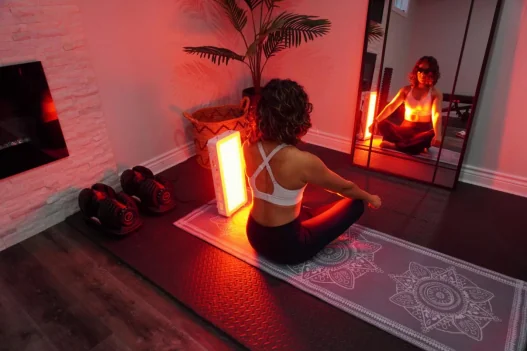
Why RLT Results Vary Sometimes?
Variability in the results of RLT often comes down to treatment parameters.
· Wavelength: Red light in the range of 630–670 nm range is useful for targeting skin and smaller muscles, while NIR 800–850 nm penetrates effectively to deeper tissues. Selection of the wrong type of wavelength hampers the benefits.
· Dose and Irradiance: Underdosing of RLT may not effectively induce cellular responses, while overdosing can blunt effects. Beneficial ranges reported in the literature are 2–10 J/cm² for surface and 6–30 J/cm² for deep applications.
· Frequency and Duration: Benefits are consistent when therapy is conducted 2–3 times per week for a few weeks. In the acute recovery situation, occasionally the treatment is performed daily, yet cumulative rather than a single exposure is usually the significant factor.
· Application technique: Distance between skin and light source, light source angle, and exposure time all have an impact on efficacy. Clinical protocols tend to be highly defined, while consumer devices vary widely in their specifications.
Real-World Cases Highlight
Athlete Recovery: A recent report claimed that Los Angeles Lakers superstar LeBron James uses red light therapy as part of this daily recovery routine. He employs RLT to help him recover from muscle damage, reduce inflammation, and get better sleep, all key components to prolong peak performance over the course of a long season.
Chronic Knee Pain: Jessica Ennis-Hill, the Olympic heptathlon gold medalist, uses red light therapy in her quest to recover quicker and reduce the risk of injury. She’s talked about how it soothes muscle soreness after training and assists in her body’s recovery — particularly after high-impact exercises that add an extra load to her joints, including her knees. For an elite athlete dealing with repetitive strain, RLT is included in a broader protocol to remain mobile, powerful, and consistent in performance.
Practical Guidelines for Benefiting from RLT
| Step | Recommendation |
| Ideal CandidatesFor RLT | Athletes managing DOMS, people dealing with musculoskeletal pain alone or in combination with exercise/rehabilitation |
| Wavelength | 630–670 nm (superficial), 800–850 nm (deep tissue) |
| Dose/Energy | The delivered energy (J/cm²) and power density (mW/cm²) are key. 2–10 J/cm² for superficial tissue and 6–30 J/cm² for deeper tissues |
| Frequency | 2–3 sessions/week for 4-8 weeks; daily usage for acute conditions |
| Timing | Use RLT pre/post training or workout depending on the goals. Enhance performance before work out and supports recovery post exercise |
| AssessmentMethod | Measure pain levels using simple 0-10 pain scale. Reassess progress every 4–8 sessions. |
| Safety | Non-invasive, well-tolerated and drug free. Don’t use RLT in pregnancy, active cancer, with photosensitizing drugs, or on open wounds. |
Common Pitfalls
1. Insufficient, or non-specified equipment — make sure the equipment provides correct wavelength and doses of light.
2. Unrealistic expectations — results happen with time, not “on the spot.”
3. Incorrect use technique — be mindful of correct distance, angle and duration for the specific RLT device.
4. Deviating from the protocols supported by evidence — follow parameters demonstrated to be beneficial to maximize the results.
Conclusion
Red light therapy isn’t a panacea, of course, but clinical and real-world evidence is piling up to show it can have real benefit both for recovery and for pain. When used properly and in conjunction with physiotherapy or training, it can potentially decrease soreness, increase performance, and assist in long term joint and muscle health.
For athletes and people with regular exercise habits, it could translate to faster return to training after intense sessions, help reduce muscle soreness (DOMS) and support consistent training. For the chronic patient, it can offer substantial pain relief to encourage daily living and rehabilitation. As clinical research refines protocols, red light therapy is expected to have an increasing role as an adjunctive, non-pharmacological approach for both treatment and pain management.
References
1. Cleveland Clinic. “Red Light Therapy: Benefits, Side Effects & Uses.” Cleveland Clinic, 1 Dec. 2021, my.clevelandclinic.org/health/articles/22114-red-light-therapy.
2. Wickenheisser VA, Zywot EM, Rabjohns EM, Lee HH, Lawrence DS, Tarrant TK. Laser Light Therapy in Inflammatory, Musculoskeletal, and Autoimmune Disease. Curr Allergy Asthma Rep. 2019;19(8):37. Published 2019 Jul 2. doi:10.1007/s11882-019-0869-z
3. da Cunha RA, Pinfildi CE, de Castro Pochini A, Cohen M. Photobiomodulation therapy and NMES improve muscle strength and jumping performance in young volleyball athletes: a randomized controlled trial study in Brazil. Lasers Med Sci. 2020;35(3):621-
4. Ferraresi, C., et al. (2011). “Red light therapy and endurance performance in athletes: A clinical study.” The Journal of Strength and Conditioning Research.
5. Khumaidi MA, Paturusi I, Nusdwinuringtyas N, et al. Is low-level laser therapy effective for patients with knee joint osteoarthritis? implications and strategies to promote laser therapy usage. Front Bioeng Biotechnol. 2022;10:1089035.


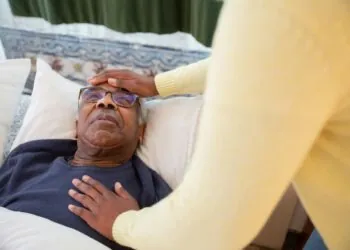
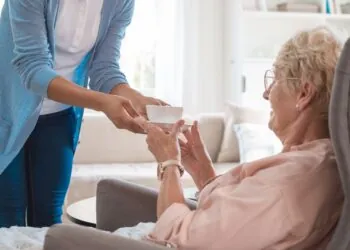
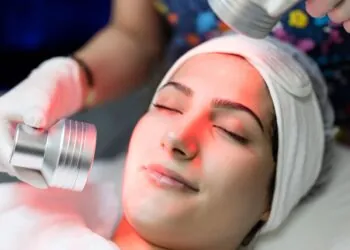
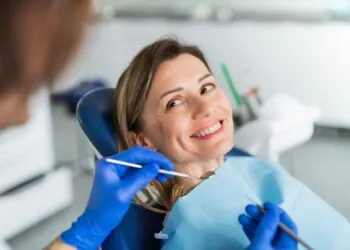
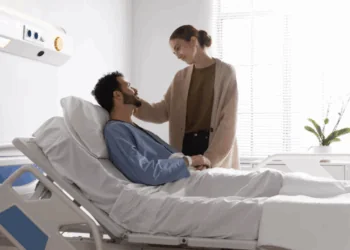







Discussion about this post